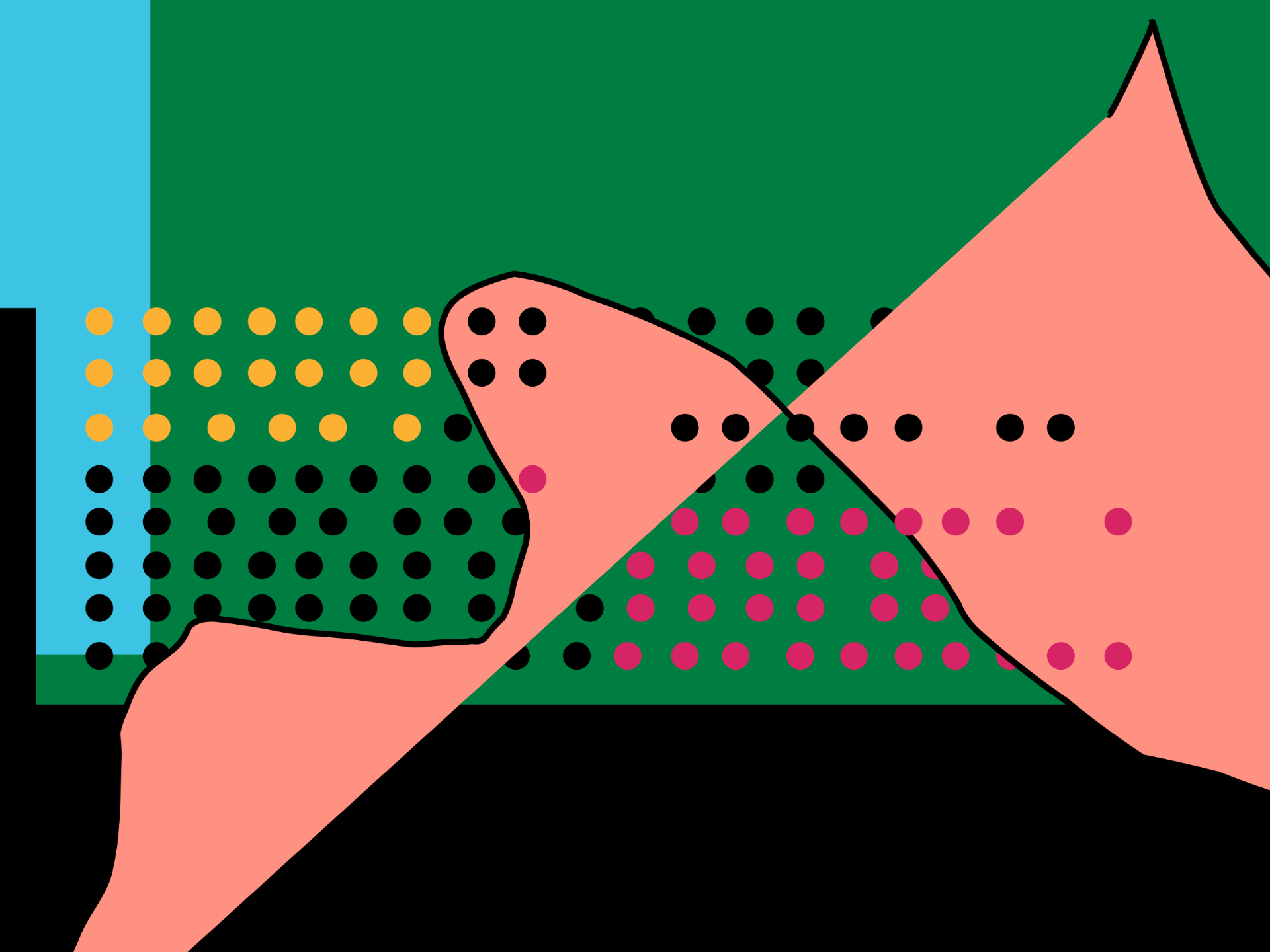Le monde appelle fous ceux qui ne sont pas fous de la folie commune
A chapter of SAVVY Contemporary’s project ULTRASANITY. ON MADNESS, SANITATION, ANTIPSYCHIATRY AND RESISTANCE, taking place within and in collaboration with the Gnaoua Festival in Essaouira. ULTRASANITY is a SAVVY Contemporary project in partnership with ifa Galerie, Association of Neuroesthetics (AoN) and Picha Lubumbashi. This chapter in particular is realised with the kind support of Alya Sebti, the Musée d’Art Contemporain Africain Al Maaden (MACAAL) and HUDUD.
Kapitel 2: Invocations Beim Gnaoua Festival 20.06.–22.06.2019
MIT Yassine Balbzioui, Hatim Belyamani, Noufissa Benjelloun, M'barek Bouhchichi, Ayesha Hameed, Taoufiq Izeddiou, Neo Muyanga, Stefania Pandolfo, Maisie Sum, Ziou Ziou Abdellah and Ziou Ziou Abdeslam, und anderen.
Ort Gnaoua Festival, Essaouira, Marokko, Zaouïa Dar Dmana (Rue Ouazzan) & Zaouïa Issaoua (Rue Sidi Leghazy)
Schedule
20.06.2019 at Zaouïa Issaoua (Rue Sidi Leghazy) | |
| 21:00 | Hatim Belyamani Performance |
22.06.2019 at Zaouïa Dar Dmana (Rue d'Agadir, Rue Ouazzan) | |
14:30 | Bonaventure Soh Bejeng Ndikung & Elena Agudio with Kelly Krugman and Abhishek Nilamber Welcome & Intro |
15:00 | Ziou Ziou Abdellah & Ziou Ziou Abdeslam Madness/ Poetry/ ResistanceS Presentation |
16:00 | Stefania Pandolfo Dreaming at the Threshold of the Law Presentation |
16:45 | Taoufiq Izeddiou Performance |
| 17:15 | Maisie Sum Healing on the Margins: Rhythm, Repetition, and Resonance of Gnaoua Music Presentation |
| 18:00 | Break |
18:30 | Noufissa Benjelloun Presentation |
19:15 | Ayesha Hameed and Neo Muyanga And Evil Earth, Maybe It’s Time For A Rumble Performance |
| 19:45 | M'barek Bouhchichi Black Body, Enigmatic Body Intervention |
20:30 | Yassine Balbzioui Flying Spoons Performance |
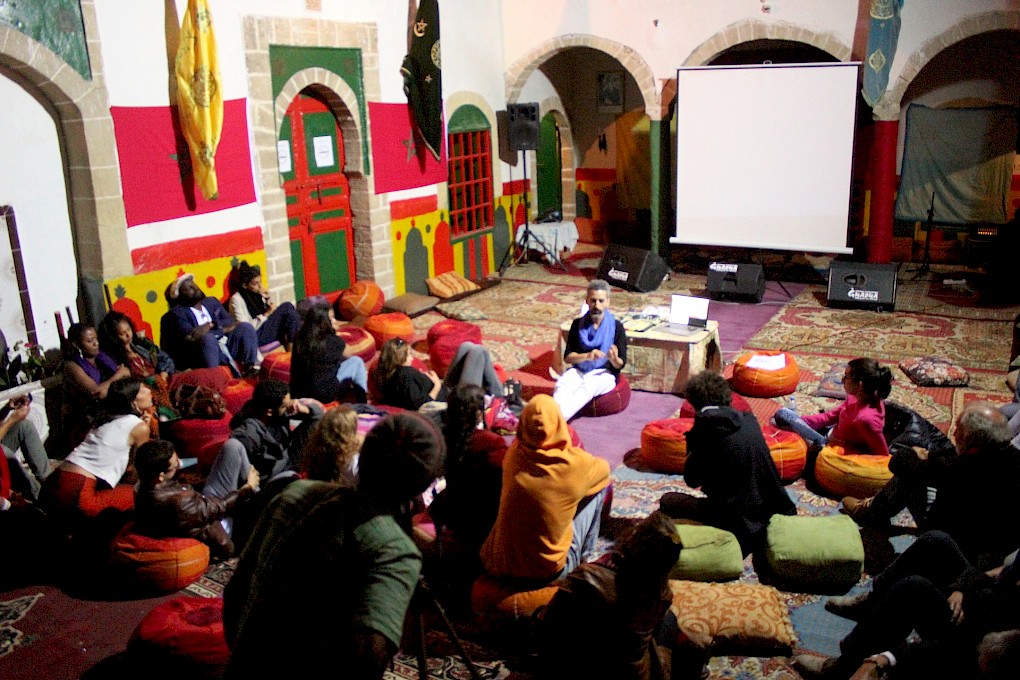
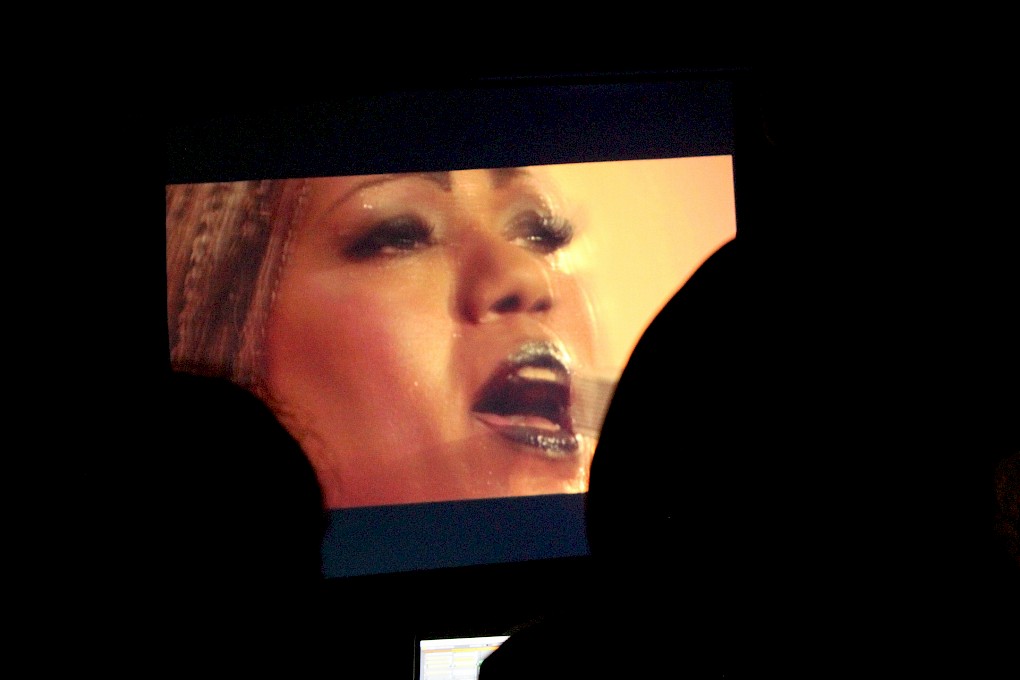
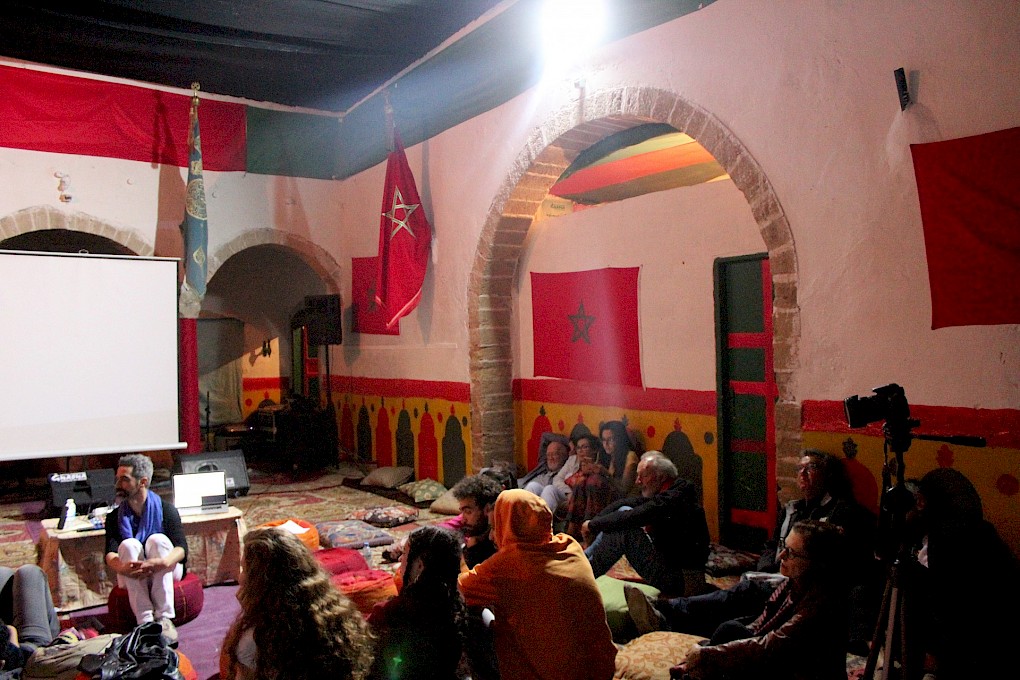
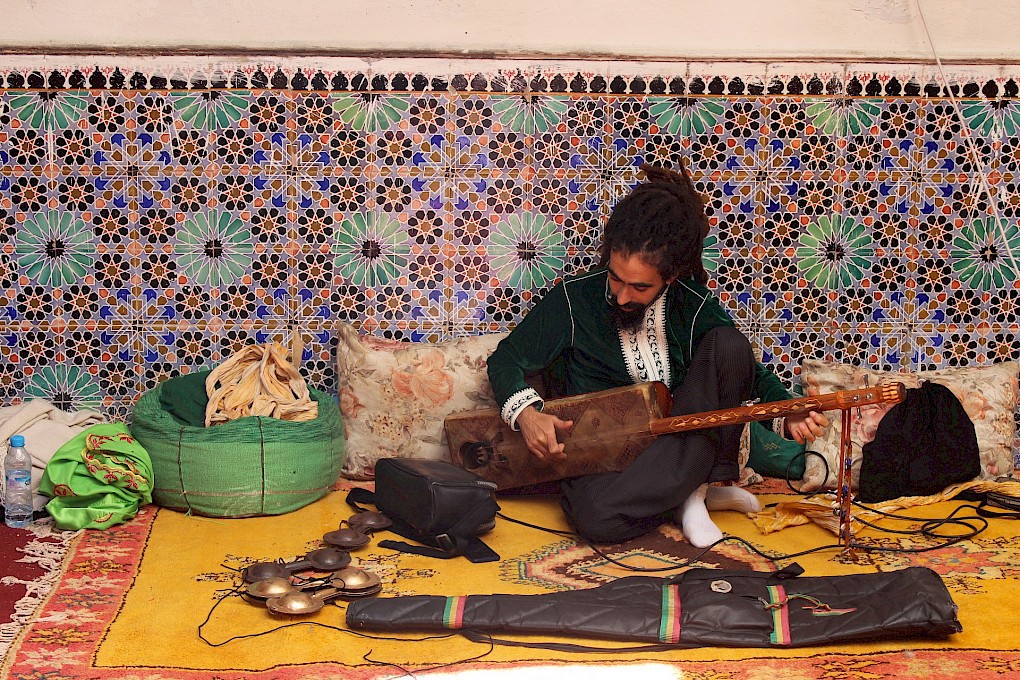
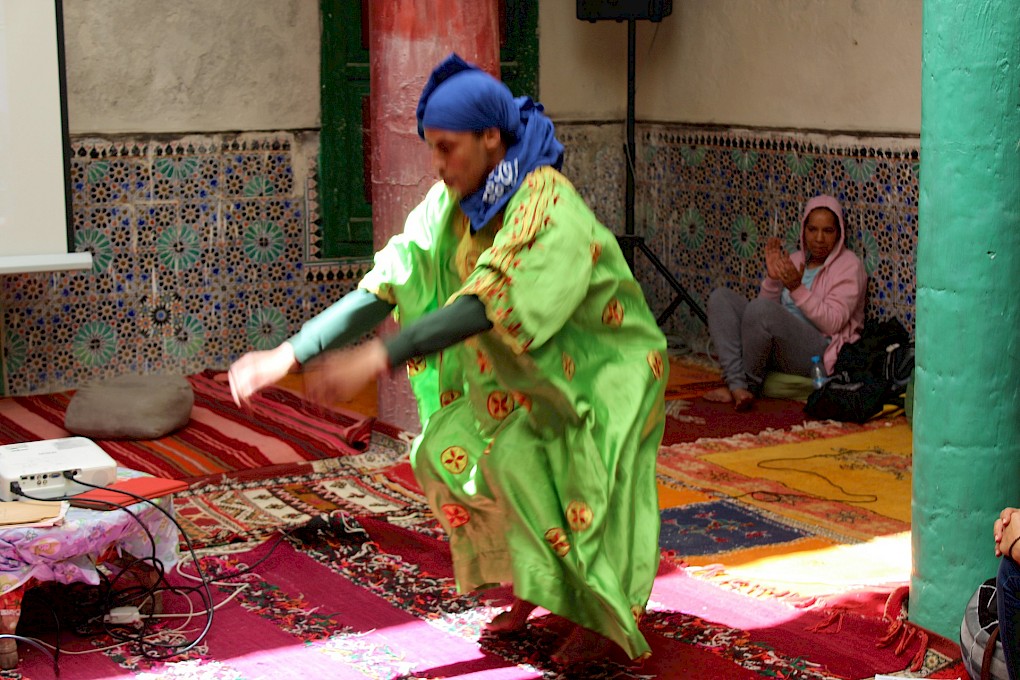
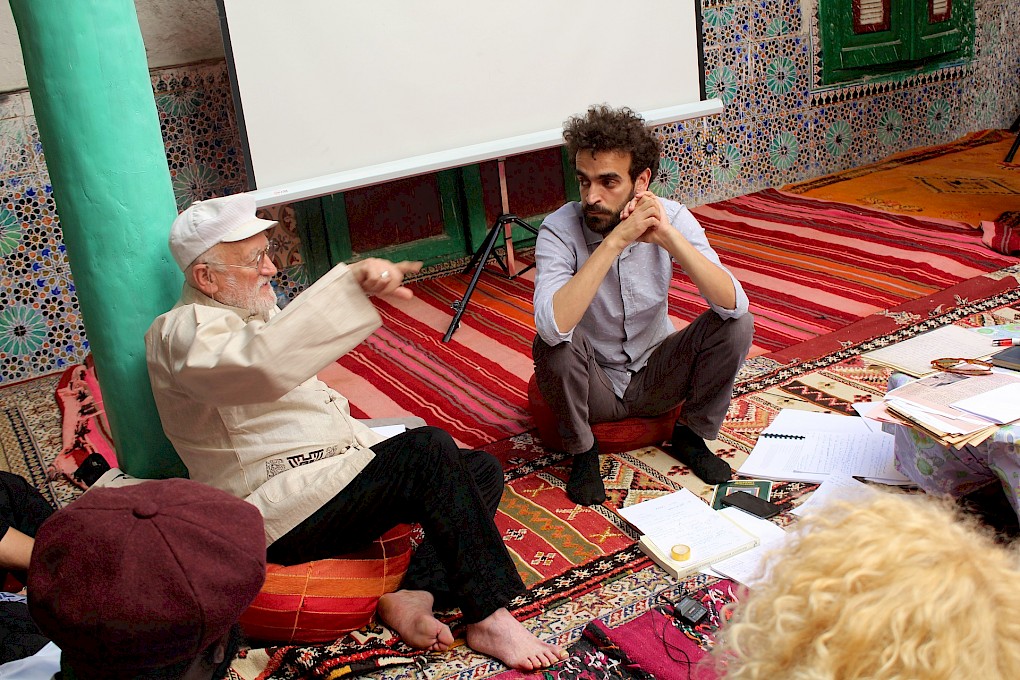
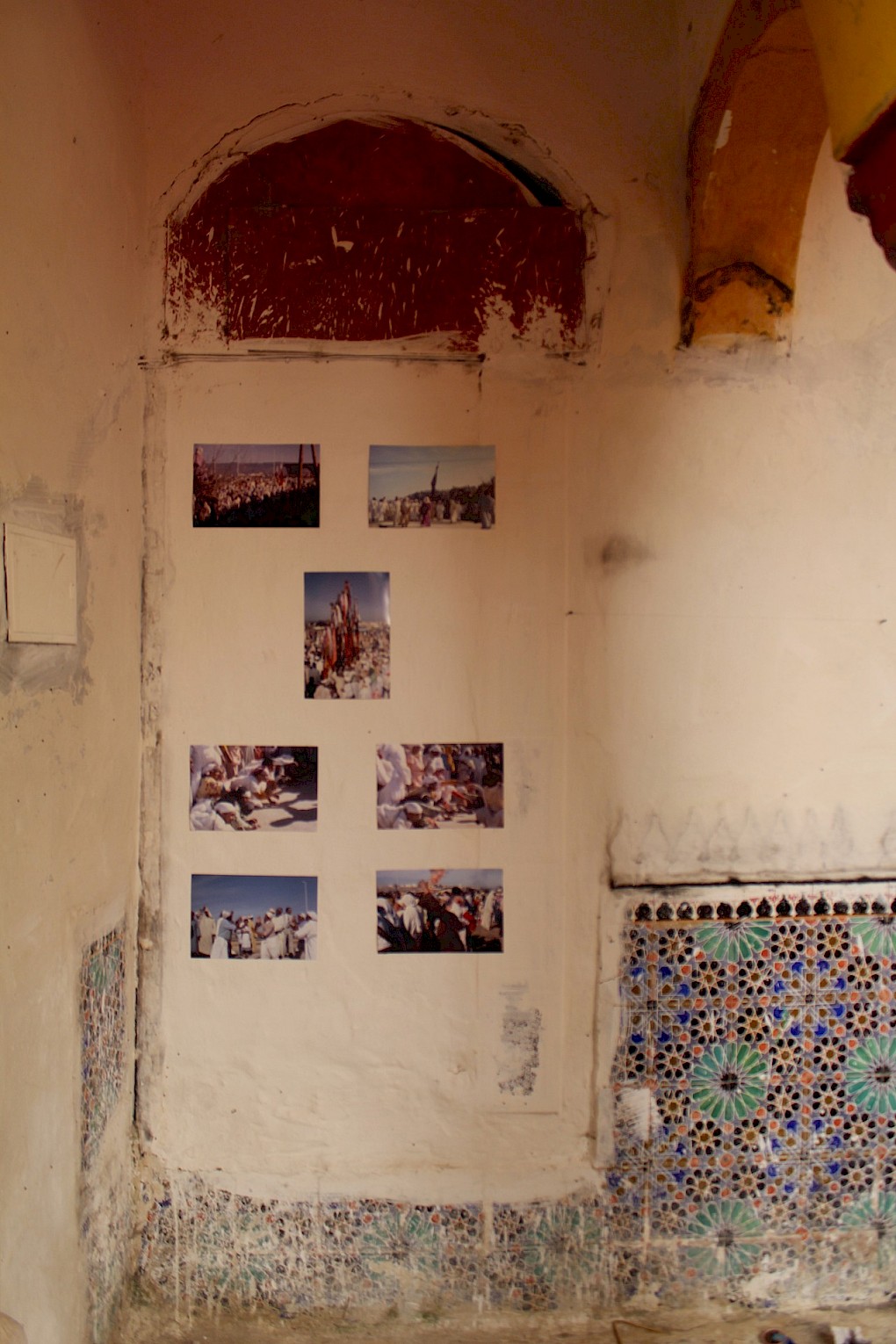
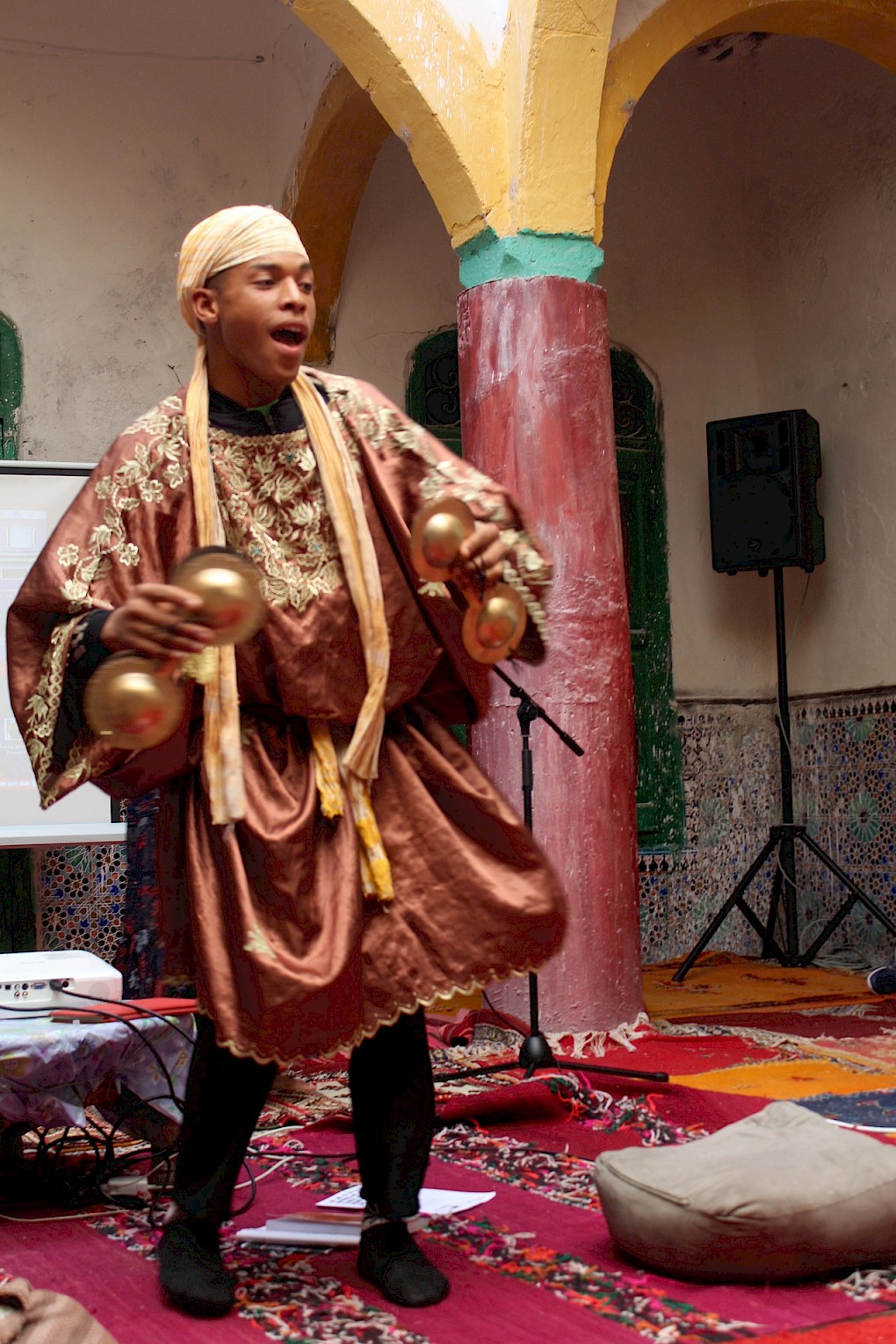
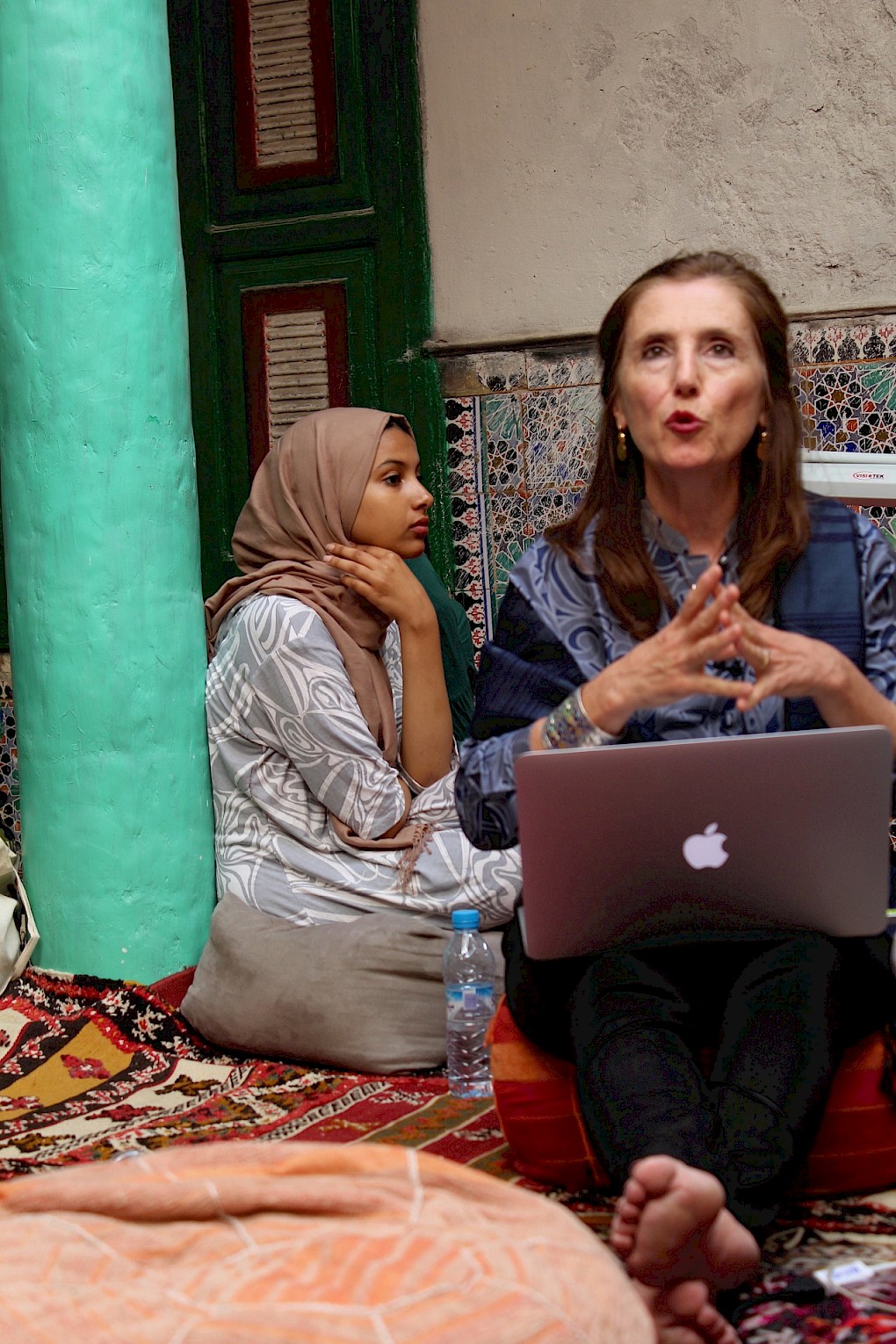
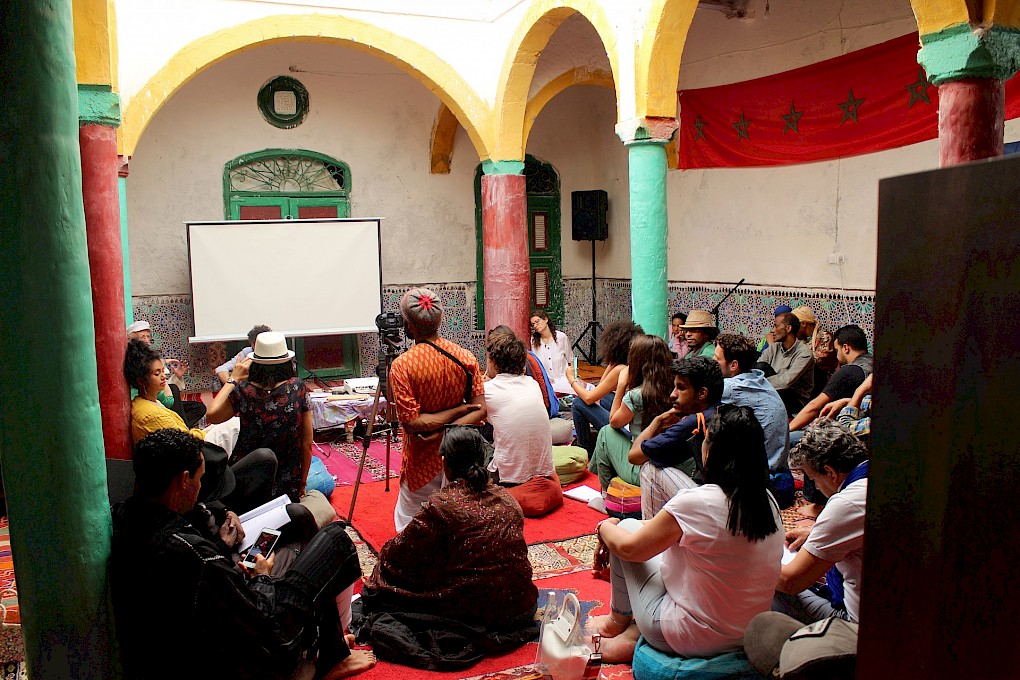
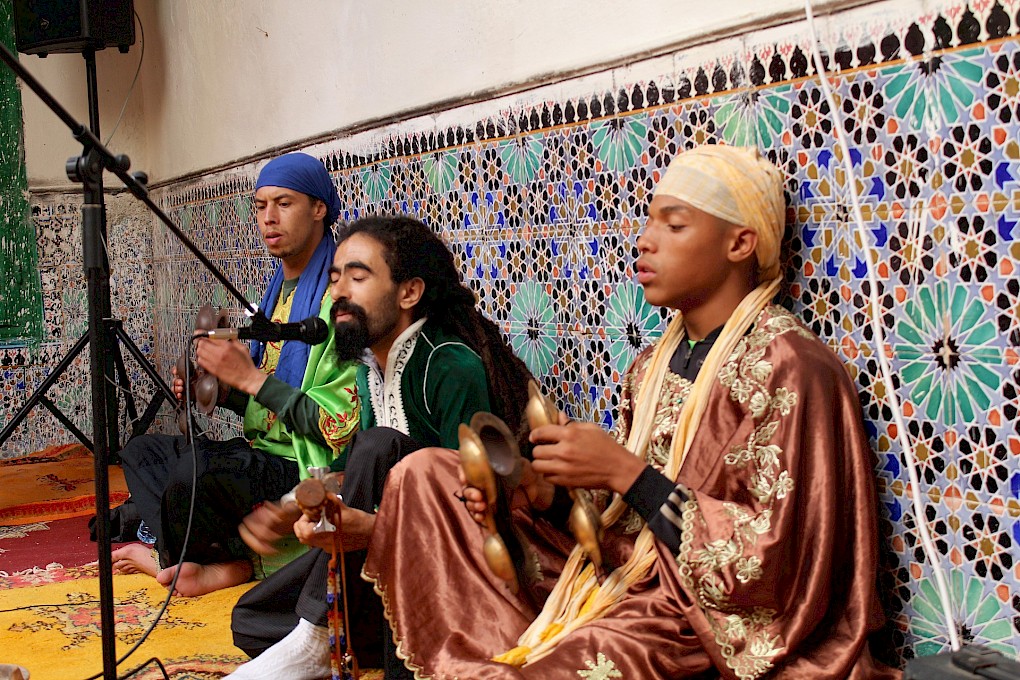
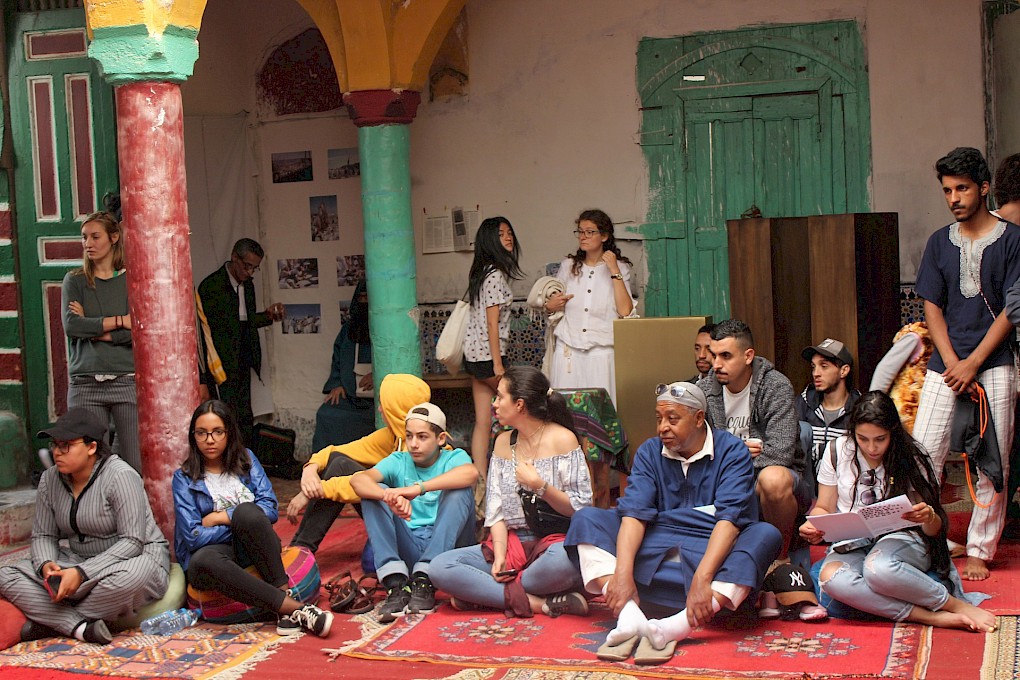
LE MONDE APPELLE FOUS CEUX QUI SONT PAS FOUS DE LA FOLIE COMMUNE is the second chapter of the yearlong research, exhibition, discourse and performative programme ULTRASANITY. ON MADNESS, SANITATION, ANTIPSYCHIATRY AND RESISTANCE. In this festival co-organized with the Gnaoua Festival 2019, we explore methods and processes of healing within and without the realms of contemporary clinical psychiatry. We intend to explore the depth and vastness of the sonic and performative rituals as healing possibilities of conceptions and constructions of mental "illness". In close association with the festival and collaborators in Essaouira and Morocco, we engage in Invocations – a mixed format of exhibition, talks, presentations, performances and spiritual interventions that is at the core of SAVVY Contemporary’s practice.
We have invited the scholars Stefania Pandolfo, Maisie Sum, Noufissa Benjelloun, Ziou Ziou Abdeslam and Ziou Ziou Abdellah to reflect critically on the traditions and practices of collective musical, ritualistic healing and community engagement.
We also invited artists Yassine Balbzioui, Hicham Chouki, Anwar Tawae, M'barek Bouhchichi, Hatim Belyamani, Taoufiq Izeddiou, Ayesha Hameed and Neo Muyanga to complicate and even disrupt theoretical perspectives with their work and their embodied, sonic and sculptural investigations.
These invocations will be initiated by the collective participation in a lila ceremony.
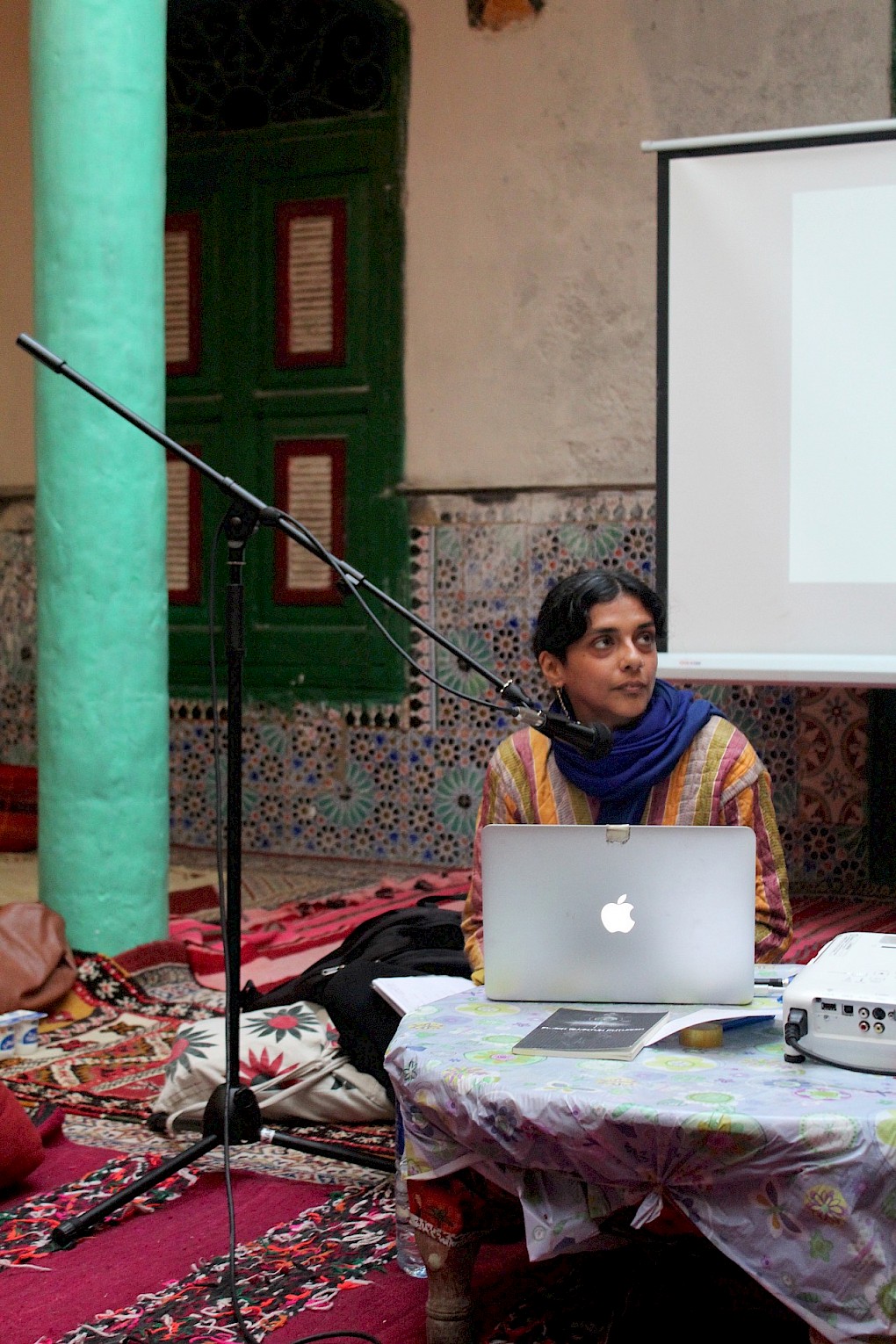
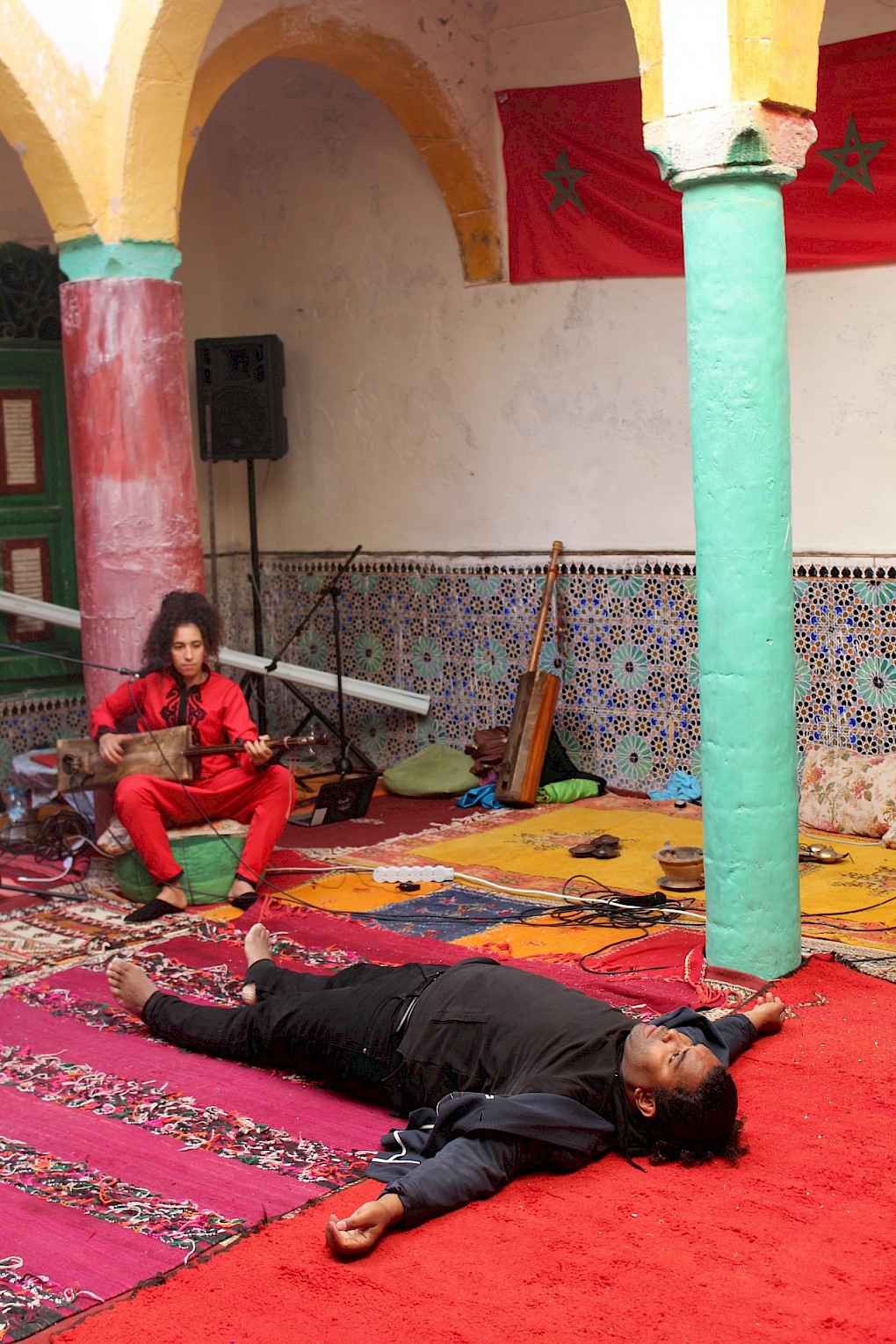
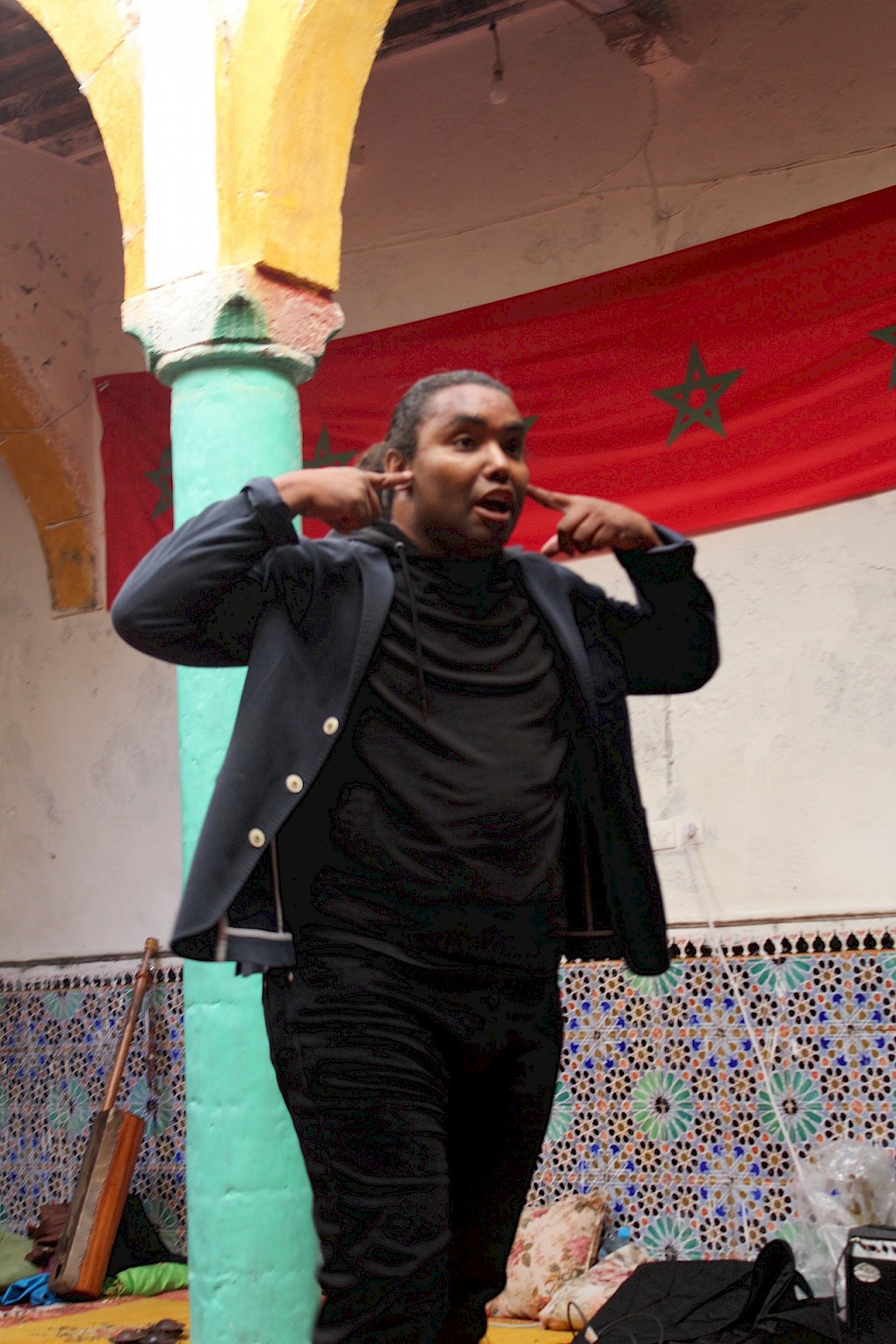
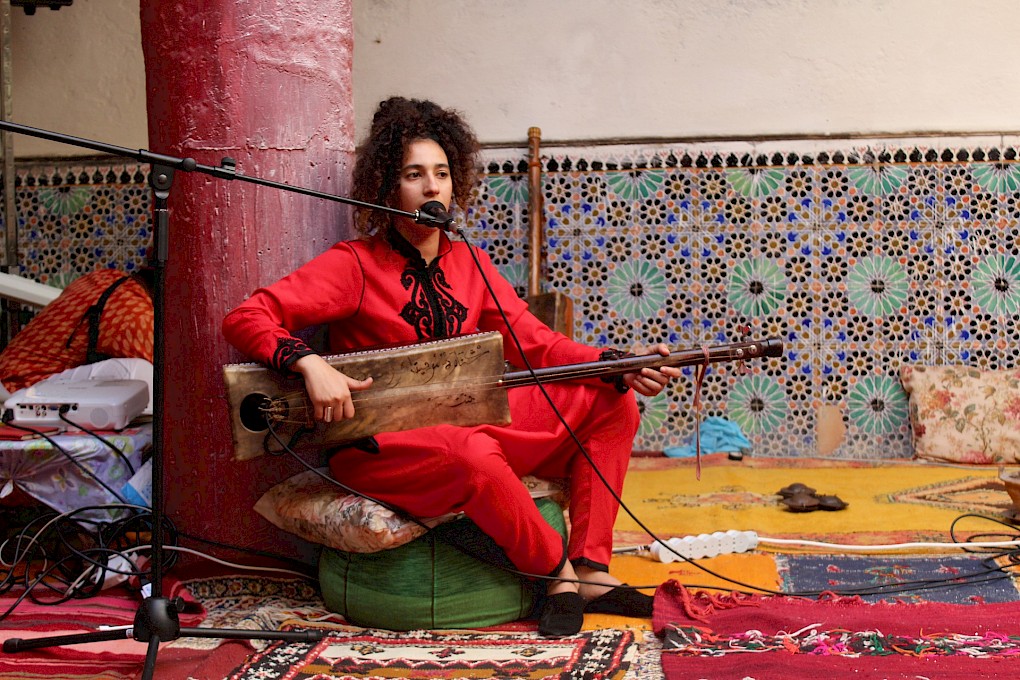
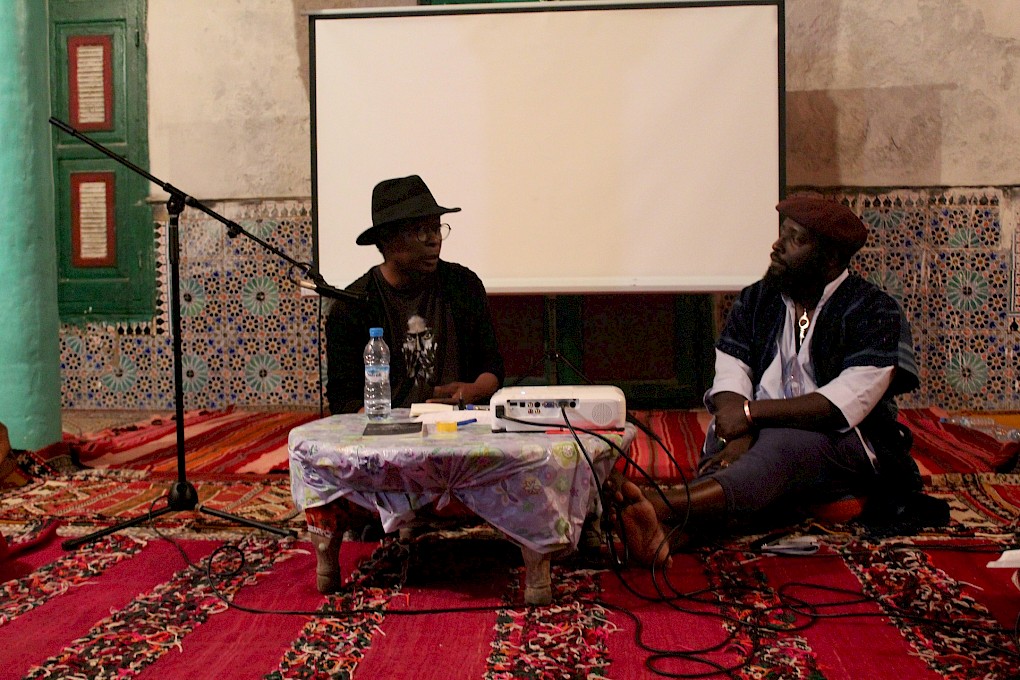
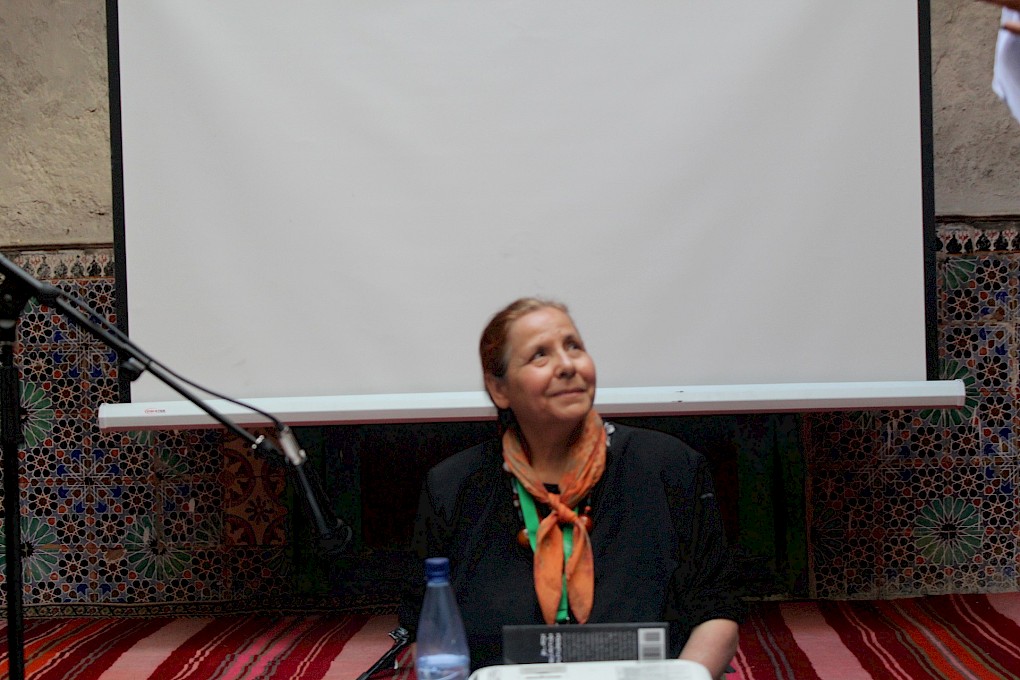
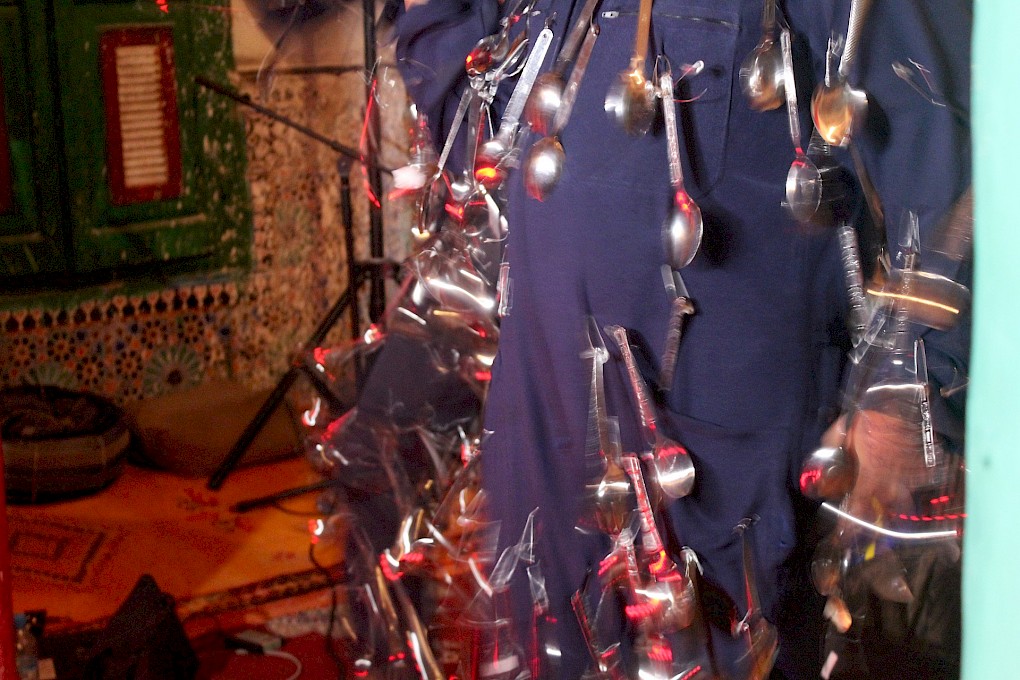
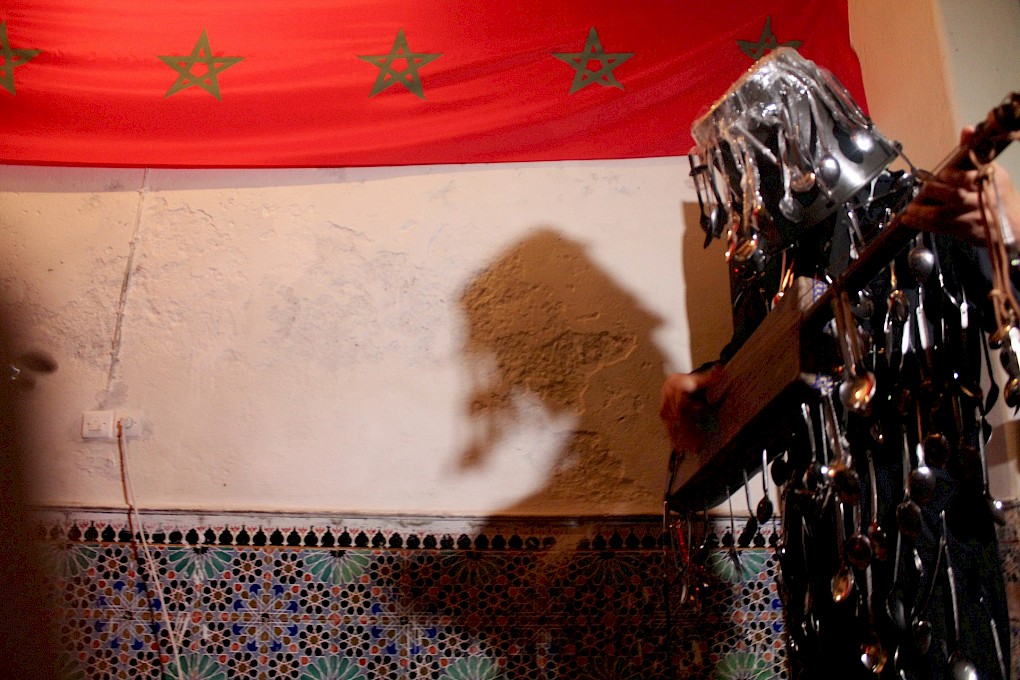
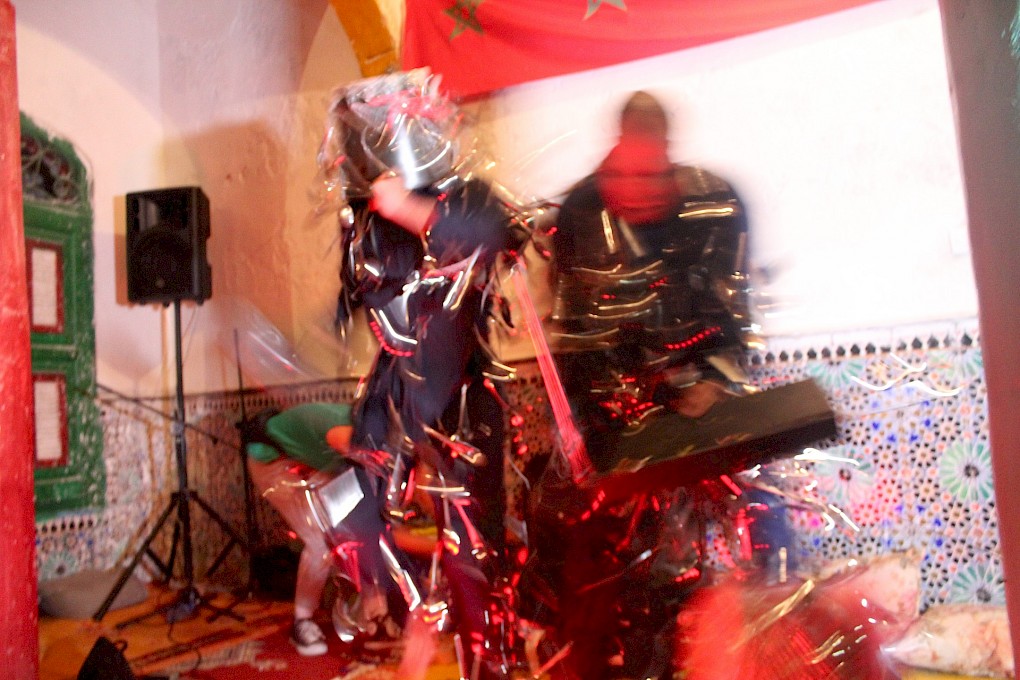
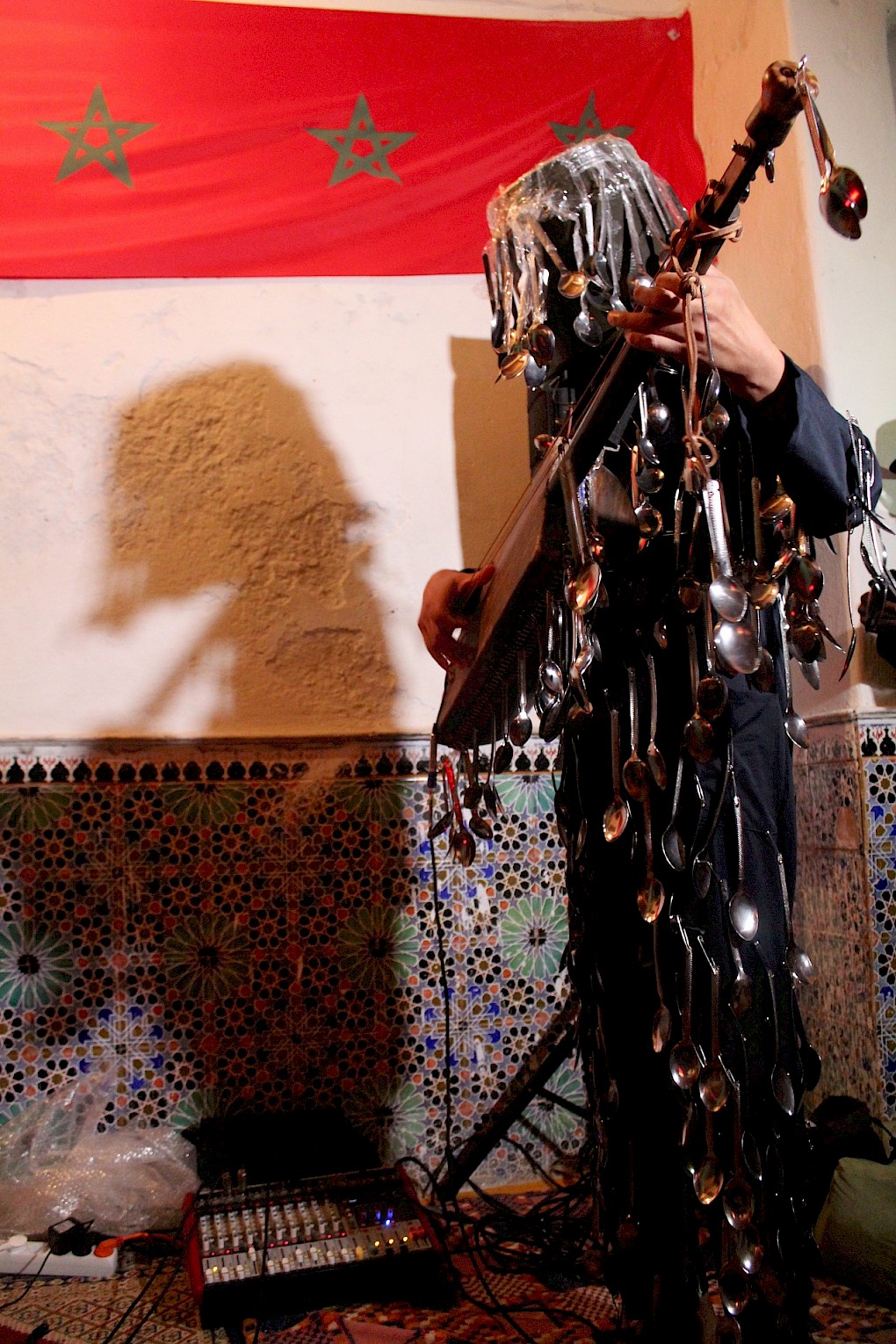
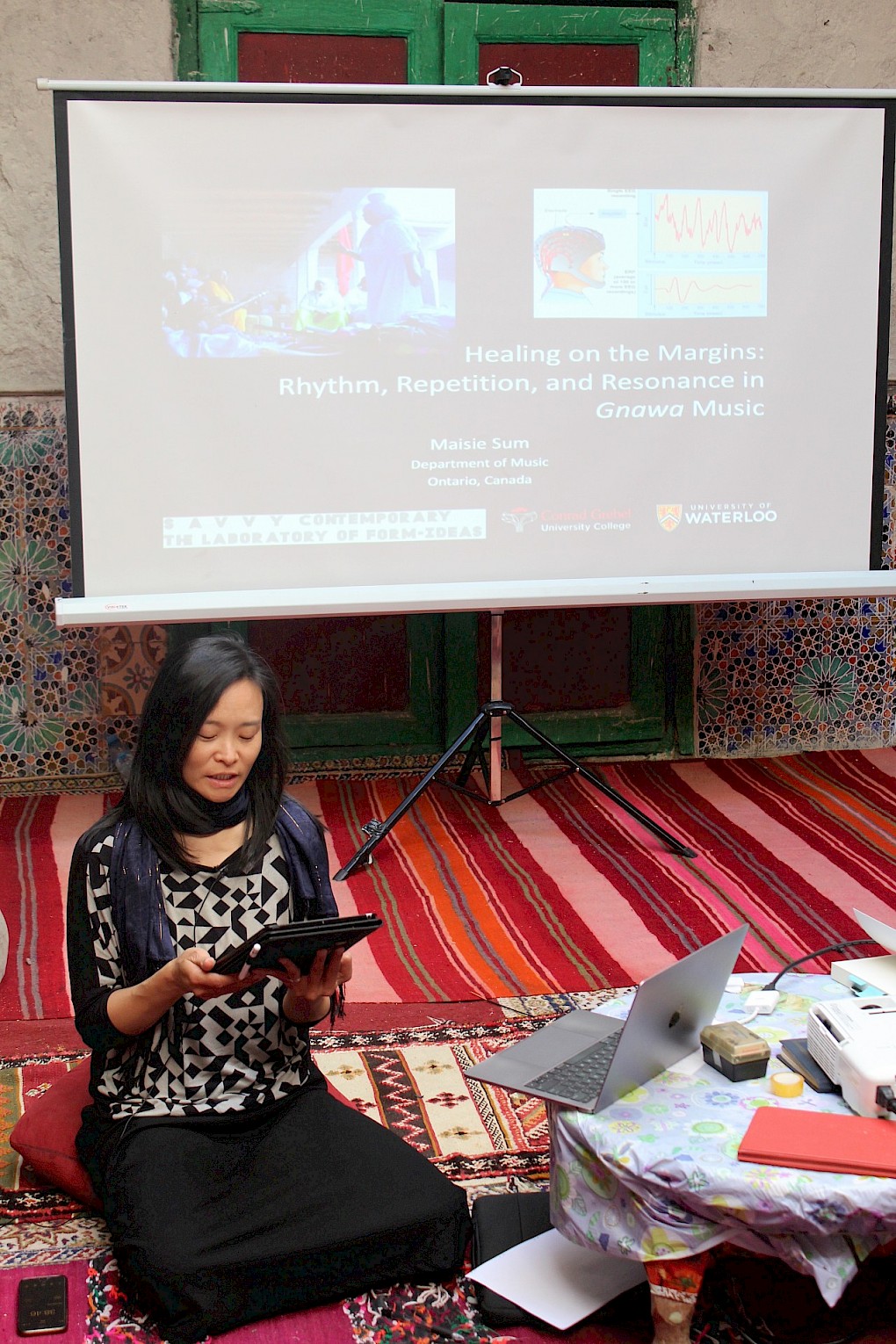
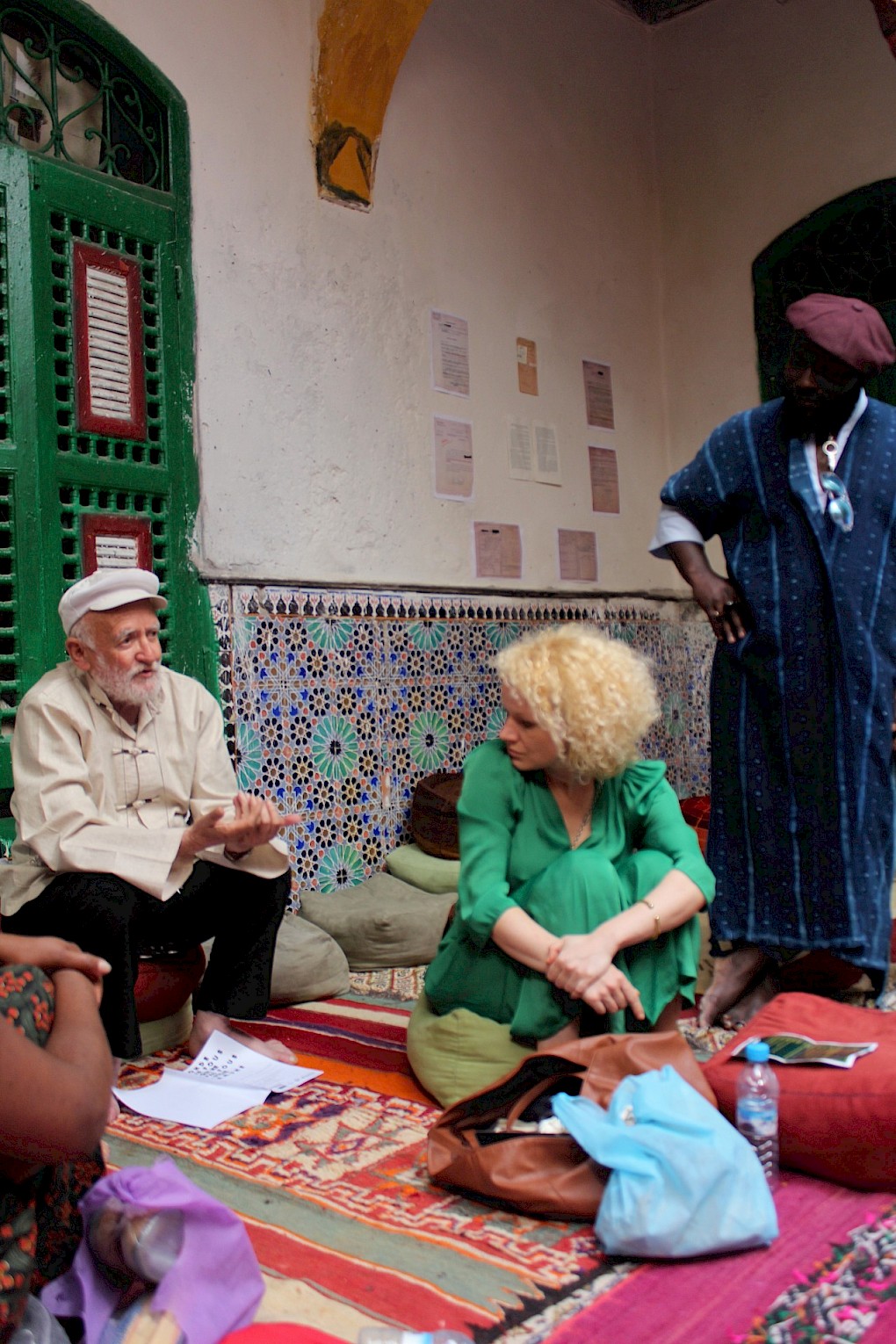
It is said that amongst the Nguembas, but also in many other African societies, individuals were never considered mad or mentally ill. Whenever someone danced out of the so–called rhythm of society, it was not the individual that was blamed for this out-of-rhythmness, nor was the individual cast out of society, but society tried to question itself about the imbalance. It was believed that an individual’s imbalance was the society’s imbalance, therefore instead of derelicting the individual into an asylum, the society would – through various rituals, work patterns, food, sacrifices, music etc. – seek a re-balancing. The so-called mad were integrated in society. And through performative healing sessions, the madness was casted out.
Amongst the Gnaoua people, the spiritually weak, possessed and so-called mad are healed through the performance of Gnaoua music and ritual practices performed under the guidance of a maalem. Through the performativity of liturgies called lila or derdeba, the Gnaoua ceremonies recreate the first sacrifice and the genesis of the universe by the evocation of the seven main manifestations of the divine demiurgic activity.
According to Maisie Sum’s Music of the Gnaoua of Morocco: Evolving Spaces and Times, the explicit goals of a lila are accomplished through a threefold progression of successive ritual stages of pre-liminal, liminal, and post-liminal: “In a lila held for the purposes of healing, the sick person traverses the three stages, processed by music and enacted in trance, to arrive at good health. The first phase serves (...) to prepare the ceremonial event through invitation of the unseen and seen, the sacred space by consecrating the floor, and the adepts with musemes (which are minimal units of musical meaning, analogous to a morpheme in linguistics). In creating a space for the invisible world to enter, the performance can be seen as an act of detachment from the temporal world. In the second ritual stage, spirit possession takes place in the form of abstract and figurative dances.
Here, the human and spirit realms interact and merge, and adepts take on the identities of the mluk. (...) This disavowal of one’s body is seen as a kind of sacrifice. Participants enter an ambiguous situation and state which Turner designates the liminal phase. Floating between invisible and visible worlds, between spirit and human, adepts enact liminality in their dance, evoked and subdued by the music and musicians and overseen by the muqaddimah and her assistants. Finally, in the post-liminal phase – that is, the end of the entire ceremony, possession portion or individual dance – participants re-enter a stable, non-ambiguous state endowed with baraka. At the end of the possession portion, entities who guide procreation (the feminine spirits) are invoked.”
One can think of other traditions where physical and mental healing, material and moral reconciliation are reached through the performativity of liturgies and of community practices. One example is Tarantism, the hysteric behaviour popularly associated with the bite of the wolf spider “Lycosa tarantula”. In southern Italy, it is believed that through the performance of the folk dance Tarantella, the sick and possessed are being healed.
These rituals of exorcism through dance were common across cultures and times. As philosopher, historian of religions and anthropologist Ernesto De Martino suggests, we could compare the phenomenon to others observed in Africa (the Sudanese bori and the Ethiopian-Egyptian zar), in Haiti (voodoo) and in Sardinia (argia). [1]
Historically, De Martino traces Tarantism back to pre-Christian orgiastic cults and Greek “maenadism”, functioning the same way as a socio-cultural response to maintain order among those affected by psychological crises. Menands, which in ancient Greek translates as “the raving ones”, were the female followers of Dionysus, women who were able to enter a state of ecstatic frenzy through a combination of dancing and intoxication, and who of course were mythologized as the “mad women”.
Writing about the religious ritual Sarpam Thullal from Kerala in South India, Sheeba Saju expands upon the concept of liminality, referring to thresholds and in between spaces encountered in the temporality of rituals, which enable liberated experiences of self beyond the social taboos and norms of everyday life. She stresses the importance of considering the pleasure generated while the performers are in this liminal space, experiencing psychic transformation through corporeal catharsis and the assertion of desire. [2]
In Essaouira, we explore and experience a lila ceremony (in Algeria called derdeba and diwan, in Tunisia stambali). They appear as syncretic rites of possession with specific therapeutic aims. They are performed as treatment and sessions for mental and psychosomatic healing, as rituals for the estrangement of negative spirits in favour of auspicious influences.
Evoking ancestral saints able to drive out evil, cure psychological troubles, or remedy scorpion stings, they heal diseases not only by use of music and dance, but also by employment of colors, perfumes, and dense cultural imagery, often even by elicitation of fright.
Within this second chapter of ULTRASANITY – after the first chapter in Venice pondering together the poiesis of collective mental healing with transcultural psychiatrists, sociologists, practitioners and artists – we are delving into the experience and the tradition of Gnaoua music and people, inviting local and international artists and researchers to confront themselves with the heuristic possibilities proposed by the Gnaoua. We will also address issues of structural and endemic racism against Black people inscribed in North African societies, interrogating the racial legacies of slavery that continue to affect intimate, social and political forms of life.
Kurator*innen Elena Agudio, Bonaventure Soh Bejeng Ndikung
KURAtorische Assistenz Kelly Krugman, Abhishek Nilamber
MANAGEMENT Lema Sikod, Lynhan Balatbat-Helbock
ManagementAssistenz Jörg-Peter Schulze
KOMMUNIKATION Anna Jäger
Design Ahmed Isamaldin, Elsa Westreicher, Lili Somogyi
Übersetzung Billy Fowo, Beya Othmani, Arlette-Louise Ndakoze
ULTRASANITY. ON MADNESS, SANITATION, ANTIPSYCHIATRY AND RESISTANCE ist ein mehrteiliges Forschungs-, Performance und Ausstellungsprojekt von SAVVY Contemporary in Kollaboration mit der ifa Gallerie Berlin, der Association of Neuroesthetics (AoN_Platform for Art and Neuroscience), Picha Lumumbashi und des Gnaoua Festival. Das Projekt wird im TURN Fond der Kulturstiftung des Bundes und der Foundation of Arts Initiative gefördert.
Das Projekt ist dem Gedenken an Giovanni Agudio gewidmet, Psychater und Kosmonaut der Psyche.

Ernesto De Martino, The Land of Remorse: A Study of Southern Italian Tarantism, translated by Dorothy L. Zinn. London: Free Association Books, 2005.
Sheeba Saju, The Pleasure in Liminality. A Psychoanalytic Re-Reading of Sarpam Thullal

